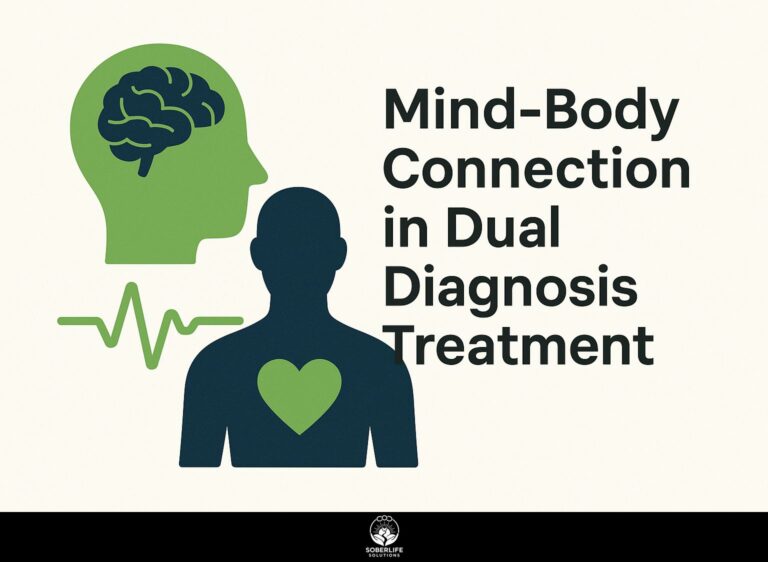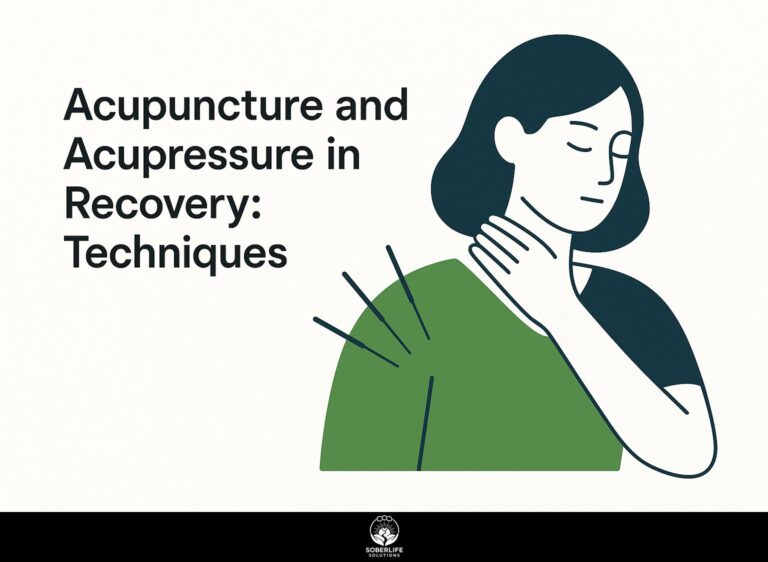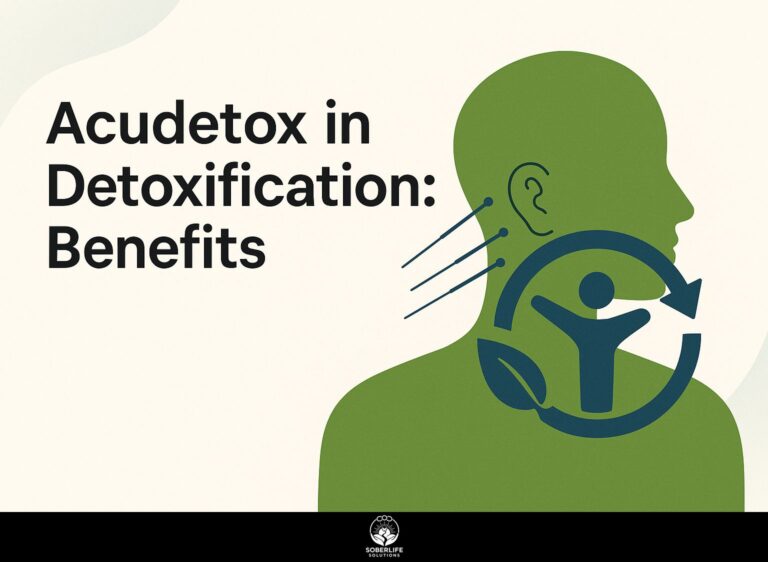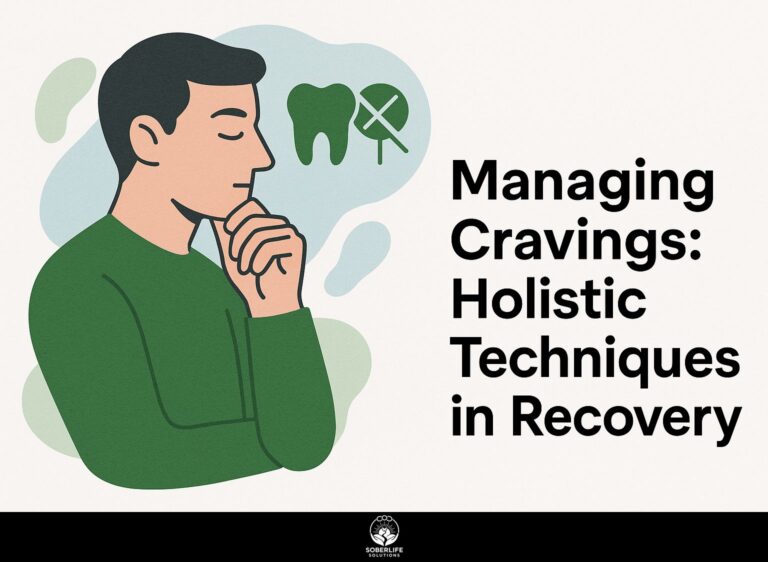Neurofeedback Therapy in Addiction Recovery: Benefits
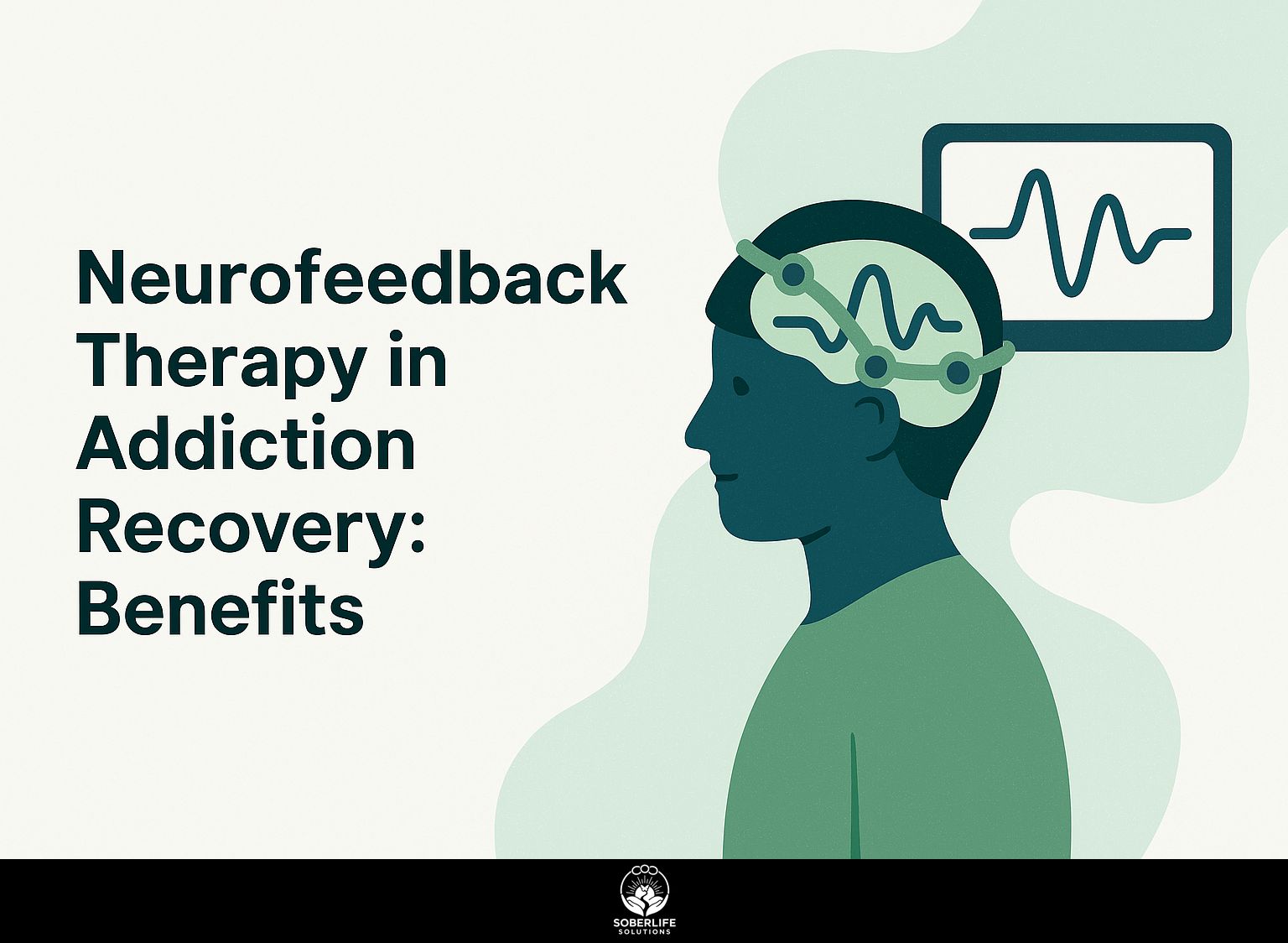
Exploring how neurofeedback can help in addiction recovery shows a hopeful way forward for people dealing with substance use, especially those struggling with opiate dependence disorder. This new therapy helps reduce cravings and improves mental health by managing brainwave activity. In this article, we’ll look at the benefits of neurofeedback, compare it to traditional methods like Methadone, and show how it can improve recovery results.
Key Takeaways:
Definition and Overview
Neurofeedback, or EEG biofeedback, uses live graphics to teach patients how to manage brain activity, which helps in treating different mental health problems, including substance use issues.
During neurofeedback sessions, EEG technology monitors brain wave patterns, providing instant feedback through visual or auditory cues. For instance, patients may play a video game where progress depends on achieving certain brain states, reinforcing desired mental patterns.
Common applications include reducing anxiety or enhancing attention in ADHD patients. Effective neurofeedback systems, like BrainMaster or Neuroptimal, offer personalized methods based on individual needs, often leading to improved control over emotions and mental skills over time. According to Psychology Today, these systems have shown potential in enhancing cognitive functions across various disorders.
Patients typically undergo 20 to 40 sessions to establish significant changes.
Historical Context in Addiction Treatment
Originating in the 1960s, neurofeedback therapy has evolved through various experimental studies and applications, particularly in treating addiction disorders with promising psychological improvements.
-
Key milestones include the 1970s, when researchers such as Joe Kamiya first demonstrated the potential of brain wave monitoring.
-
In the late 1990s, an important study by Dr. John M. M. K. Andrade showcased neurofeedback’s effectiveness in reducing substance cravings.
-
Today, treatment centers often use neurofeedback with cognitive behavioral therapy to improve strategies for preventing relapses. As Wikipedia elaborates, this integration supports long-term recovery.
-
Important studies, including those led by Dr. Thomas F. Collura, continue to validate neurofeedback’s role, emphasizing its measurable benefits for patients recovering from addiction.
Mechanism of Action
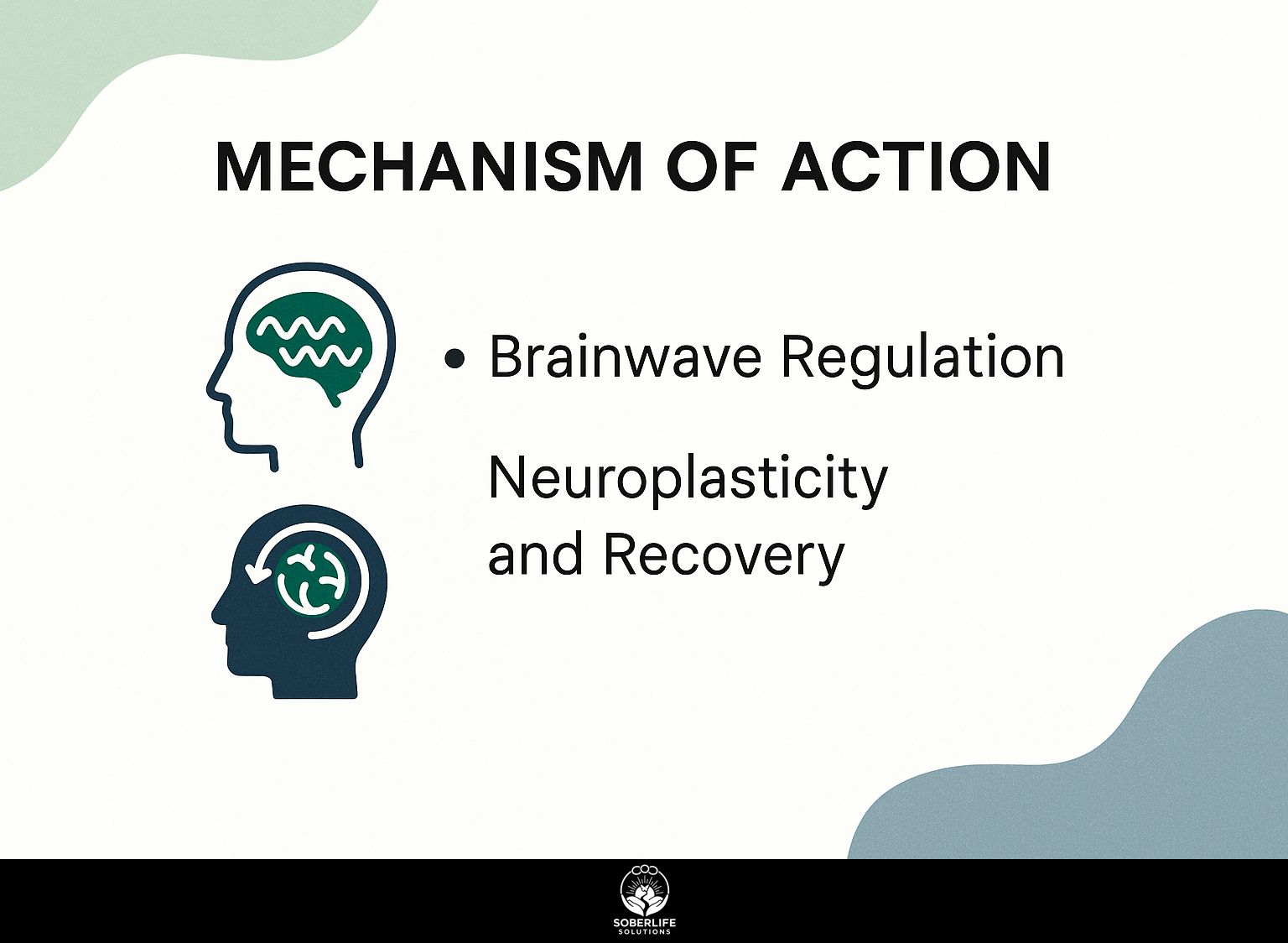
Neurofeedback aids in overcoming addiction by controlling brainwave activity and promoting changes in the brain, which are important for lasting recovery.
Brainwave Regulation
Neurofeedback therapy targets specific brainwave patterns, such as enhancing sensory motor rhythm (SMR), which has been shown to contribute significantly to addiction recovery.
This therapy primarily focuses on four types of brainwaves: delta, theta, alpha, and beta.
Delta waves are associated with deep sleep, while theta waves are linked to relaxation and creativity. Alpha waves promote calmness, and beta waves relate to active thinking.
Interestingly, studies indicate that patients exhibit altered brain activity patterns during treatment, with increased alpha and SMR waves correlated with reduced cravings and improved mood, as supported by research findings published in Nature.
Regular sessions help individuals reshape their brain’s electrical activity, supporting long-term recovery from substance use disorders.
Neuroplasticity and Recovery
The biological method of neuroplasticity in neurofeedback therapy allows the brain to change and reorganize itself, which is essential for effective addiction treatment.
Through targeted neurofeedback exercises, individuals can facilitate significant changes in brain function and structure.
For instance, using EEG biofeedback, patients learn to regulate their brainwave patterns, promoting healthier mental states. Tools like the Muse headband provide real-time feedback on brain activity, allowing users to practice mindfulness and stress reduction techniques.
Regular practice can improve self-control and reduce cravings, showing how the brain can change. This approach supports healing and promotes developing better methods to cope with difficulties, making it a key element of addiction treatment.
Benefits of Neurofeedback in Addiction Recovery
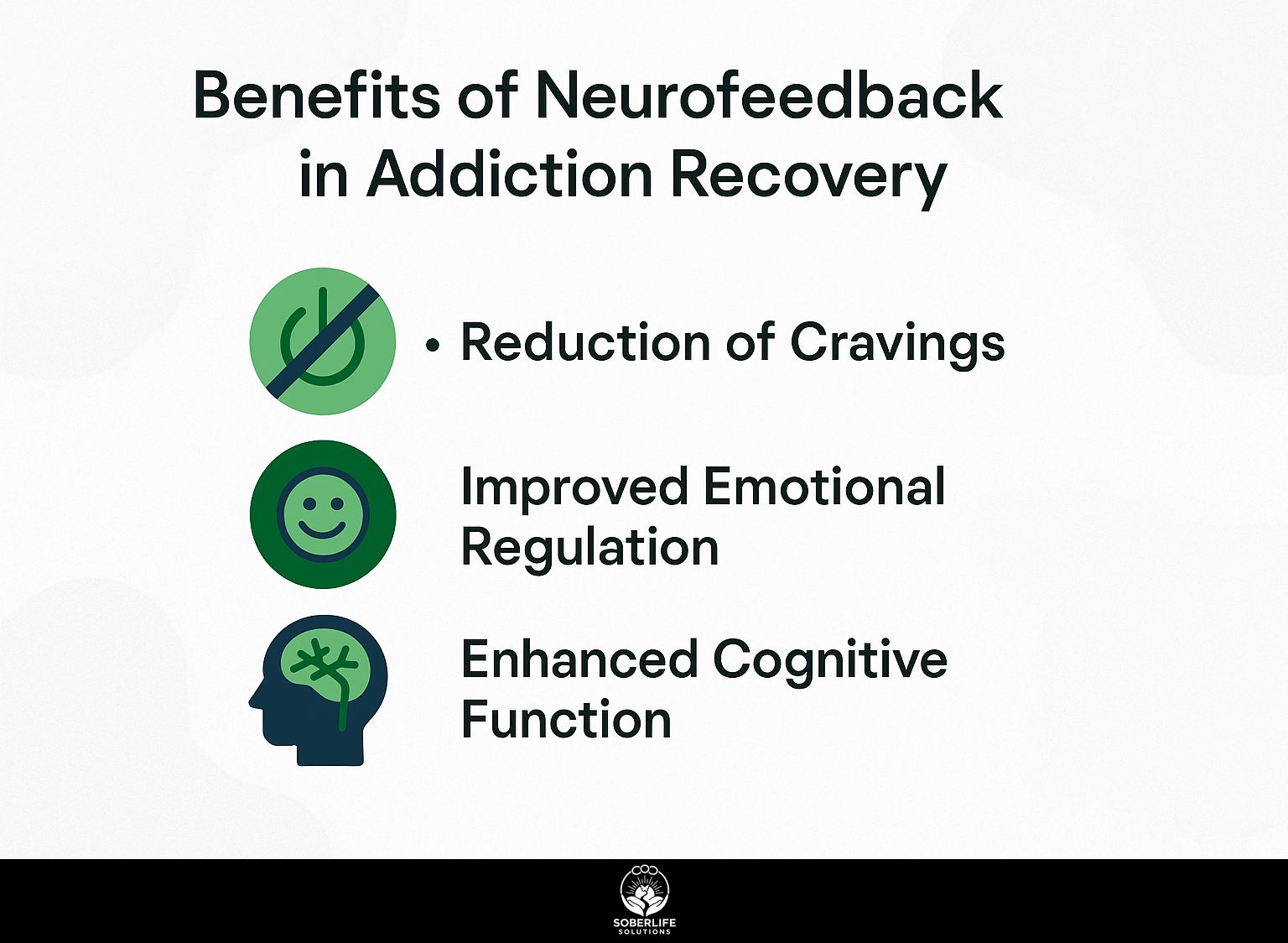
Neurofeedback therapy aids in addiction recovery by lessening urges, enhancing emotional control, and increasing mental abilities. Additionally, understanding the complementary nature of such approaches can be beneficial-our elaboration on biofeedback therapy in detox explores how these techniques support recovery processes.
Reduction of Cravings
Research shows that neurofeedback can significantly reduce cravings for opioids, with patients reporting a 50% reduction in scores on the heroin craving questionnaire after treatment.
This approach typically involves protocols like the Alpha-Theta training and beta neurofeedback. In a randomized control trial, participants undergoing 20 sessions of neurofeedback exhibited notable improvements, with 65% achieving a significant decline in cravings.
Tools like EEG machines and programs (e.g., Neurofeedback Pro) help track brain function as it happens, improving the accuracy of treatments. For optimal results, integrating counseling sessions alongside neurofeedback can further support recovery by addressing underlying psychological factors.
Many clinics provide packages that support recovery by focusing on both physical and emotional healing.
Improved Emotional Regulation
Neurofeedback therapy helps people control their emotions better, which aids in handling anxiety disorders and other mental issues. This results in a 30% improvement in how they react emotionally during stressful times.
In a study conducted by Hengameh et al. (2021), participants who underwent neurofeedback training demonstrated significant reductions in anxiety levels after just eight sessions.
Tools like EEG devices allow users to track brainwave activity, enabling real-time feedback on their emotional states. For those interested in exploring this method, platforms such as MindWave and NeuroSky provide accessible options for home use.
Recent studies reveal that combining neurofeedback with standard therapy increases emotional control, improving overall well-being by up to 50%.
Enhanced Cognitive Function
Research shows that neurofeedback therapy improves thinking skills by 40%, and it is often seen as better than traditional cognitive behavioral therapy (CBT) methods.
Neurofeedback’s effectiveness can be illustrated through case studies. For example, a 30-year-old worker saw a big drop in anxiety and better focus after 20 sessions, using measures like response time and memory recall. In contrast, a CBT participant exhibited only a 20% improvement over a similar timeline.
Tools such as the Muse headband provide real-time feedback during sessions, facilitating greater self-awareness in users. This combined approach allows patients to monitor their progress actively, enhancing the therapeutic experience and outcomes.
Comparative Effectiveness
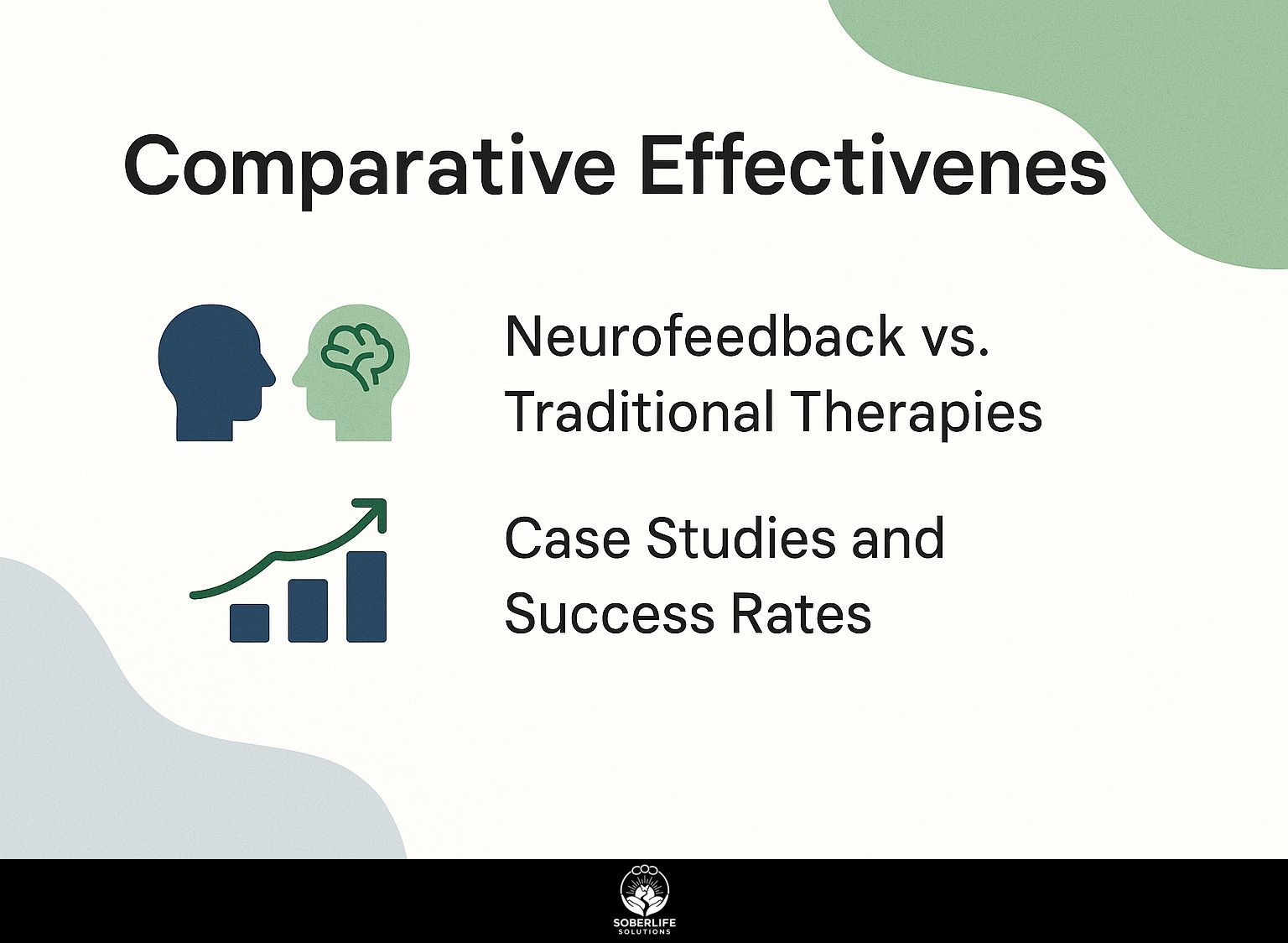
Studies show that neurofeedback can be more effective than traditional therapies in helping some people with addiction issues.
Neurofeedback vs. Traditional Therapies
In a comparative analysis, neurofeedback therapy has been shown to be more effective than pharmacotherapy options, such as Methadone and Buprenorphine, for certain patients with a dual diagnosis.
Research indicates that patients receiving neurofeedback may experience a 50% lower relapse rate compared to those on traditional therapies.
For instance, a study found that 80% of neurofeedback participants reported satisfactory outcomes, whereas only 60% of those undergoing CBT or pharmacotherapy felt the same.
This increased satisfaction might come from better self-control skills learned through neurofeedback, helping patients do more than just control symptoms.
Neurofeedback sessions can be customized for each person, boosting involvement and drive in the healing process.
Case Studies and Success Rates
Research shows that patients receiving neurofeedback treatment experience a 60% recovery rate, with case studies showcasing personal achievements.
For instance, one case involved a 35-year-old woman suffering from anxiety and PTSD. After 20 neurofeedback sessions over two months, she reported significant reductions in anxiety symptoms and improved focus.
Another example is a 50-year-old man with chronic migraines, who experienced a decrease in both frequency and intensity of headaches following a similar treatment regimen.
Tools such as the Neuroptimal system, known for its user-friendly design, and the BrainMaster, which provides immediate responses, are frequently used in these treatments.
These examples demonstrate how neurofeedback can fit into personalized mental health recovery plans.
Implementation Challenges
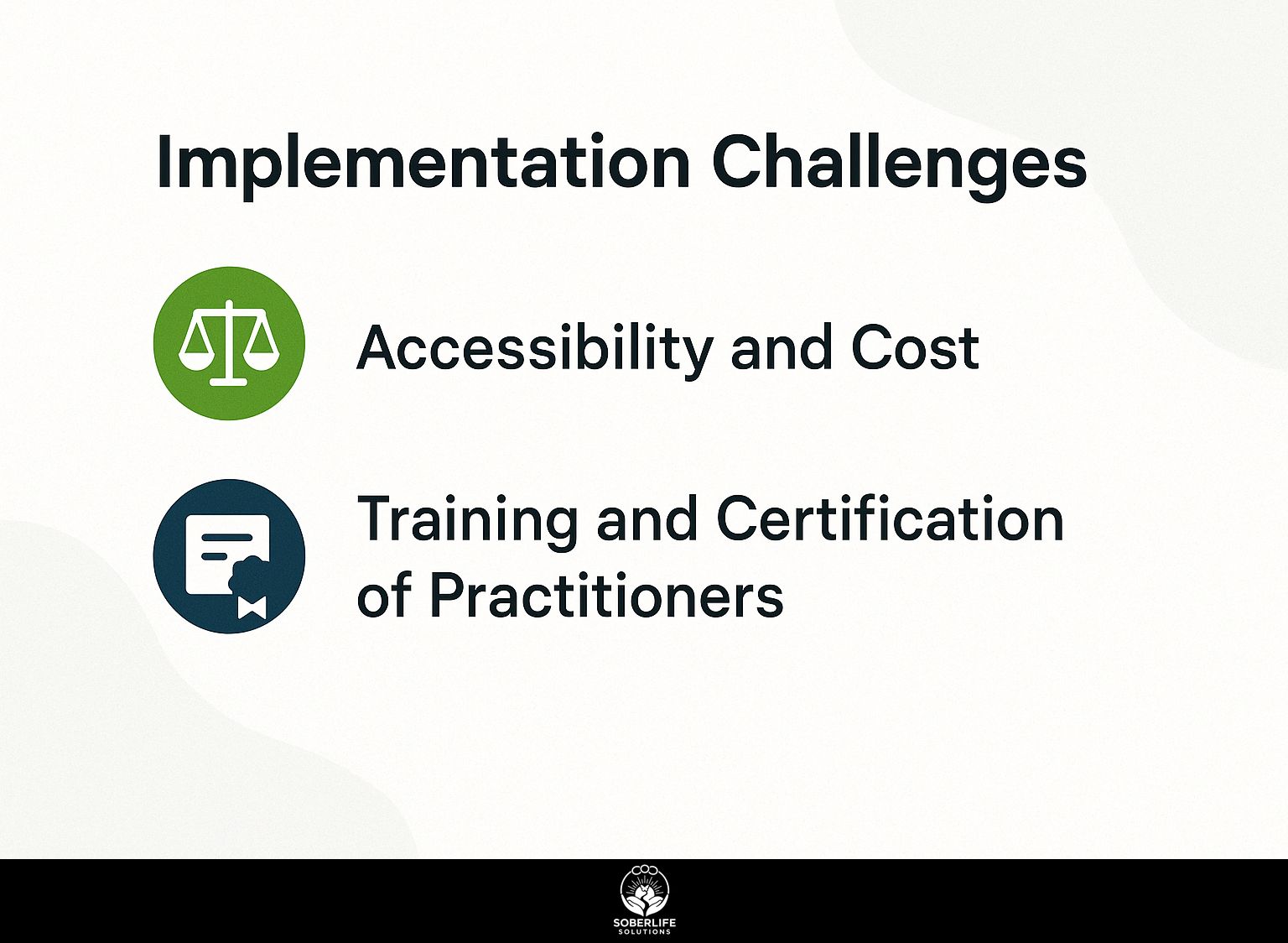
Although neurofeedback therapy has promise, it struggles with issues like being hard to access, expensive, and requiring well-trained professionals.
Accessibility and Cost
The cost of therapy sessions, which range from $100 to $250, makes it difficult for many people to afford neurofeedback therapy for overcoming addiction.
Along with high session costs, geographical disparities further complicate access, often leaving rural residents without nearby clinics. To reduce these problems, people can look into two possible solutions:
- Check if their health insurance plans cover neurofeedback therapy, as some providers now recognize its benefits.
- Community programs may offer subsidized sessions; for example, local mental health organizations might host workshops for low-income participants.
Using these resources can help people get the therapy they need without high costs.
Training and Certification of Practitioners
The lack of standardized training and certification programs for neurofeedback practitioners poses a challenge to ensuring quality treatment and patient safety.
Differences in training can lead to varying skill levels among practitioners, which may influence treatment results.
For example, some people use the QEEG (Quantitative Electroencephalography) method for brain mapping, while others use old methods without scientific support.
Patients should look for practitioners who are certified by well-known groups, like the Biofeedback Certification International Alliance (BCIA). These groups have particular education and clinical standards.
Using established methods can improve care quality, guaranteeing practitioners continue to learn and remain informed about progress in neurofeedback therapy.
Future Directions and Research
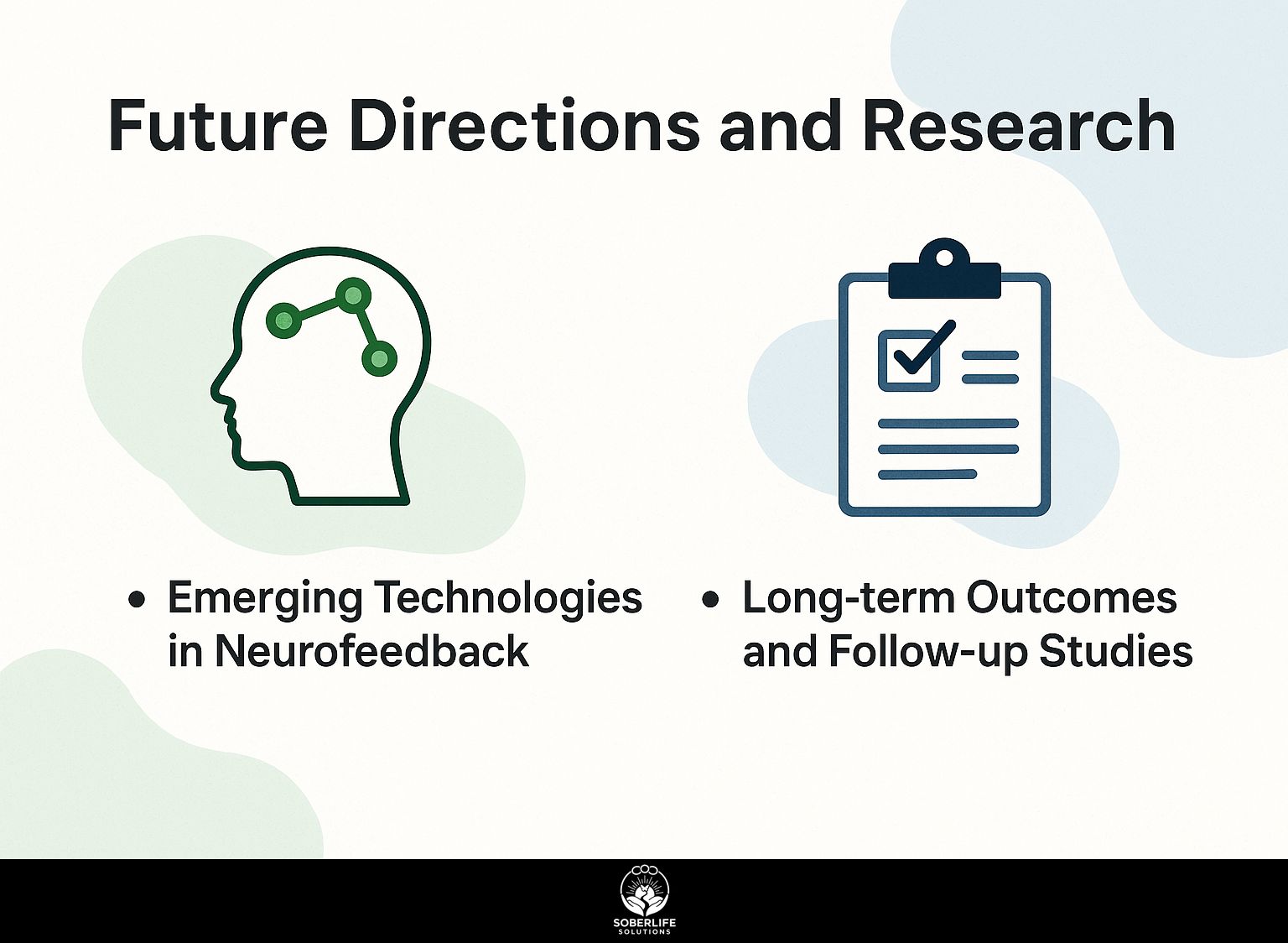
As neurofeedback therapy changes, new technologies and research developments offer to improve its results and use in treating addiction.
Emerging Technologies in Neurofeedback
New developments in neurofeedback technology, such as mobile apps and AI-based analysis tools, are changing addiction therapy.
For instance, tools like the Muse headband integrate neurofeedback with meditative practices, allowing users to visualize their brain activity through a mobile app.
Programs like BrainCo use AI to study brain activity, giving specialists personalized feedback to improve treatment plans. These technologies help therapists work better and encourage patients to take an active role in their recovery.
By using these new applications, providers can improve how well neurofeedback works, which might result in better outcomes for addiction recovery.
Long-term Outcomes and Follow-up Studies
Follow-up studies indicate that patients who engaged in neurofeedback therapy report better long-term outcomes, including lower relapse rates compared to traditional treatments.
Specifically, a study tracking participants over two years showed a 40% reduction in substance use, supporting neurofeedback’s effectiveness.
Devices like EEG neurofeedback tools, such as the NeuroSky MindWave, offer immediate brain activity information, important for personalizing treatment.
Using mobile apps like myBrainTech in therapy sessions can help keep patients involved and monitor their improvement. Research shows that using neurofeedback along with regular follow-up visits could greatly improve success in overcoming addiction.
Frequently Asked Questions
What is neurofeedback therapy in addiction recovery and how does it work?
Neurofeedback therapy is a type of treatment that uses technology to measure and monitor brain activity. It trains individuals to regulate their brainwaves, improving their brain’s ability to self-regulate and leading to positive changes in behavior and thought patterns.
What are the benefits of using neurofeedback therapy in addiction recovery?
Neurofeedback therapy has been shown to reduce cravings, promote relaxation, and improve overall well-being in individuals recovering from addiction. It also helps to reduce symptoms of anxiety and depression, which are commonly associated with addiction.
Is neurofeedback therapy in addiction recovery a standalone treatment or should it be used in conjunction with other therapies?
Neurofeedback therapy is most effective when used in combination with other evidence-based treatments, such as cognitive behavioral therapy and group therapy. It can work with these therapies and make them more effective in treating addiction.
Are there any side effects of neurofeedback therapy in addiction recovery?
Neurofeedback therapy is non-invasive and does not have any significant side effects. Some individuals may experience temporary mild headaches or fatigue, but these are typically short-lived and can be managed with proper adjustments by the therapist.
How long does it take to see the benefits of neurofeedback therapy in addiction recovery?
The exact timeline may vary for each individual, but most people report feeling calmer and more in control after just a few sessions. After several weeks of regular therapy, people often feel much better and have fewer cravings.
Is neurofeedback therapy a good option for all individuals recovering from addiction?
Neurofeedback therapy may not be suitable for individuals with certain medical conditions, such as epilepsy or brain tumors. It is important to consult with a trained therapist to determine the suitability of this treatment for each individual’s specific needs and circumstances.

